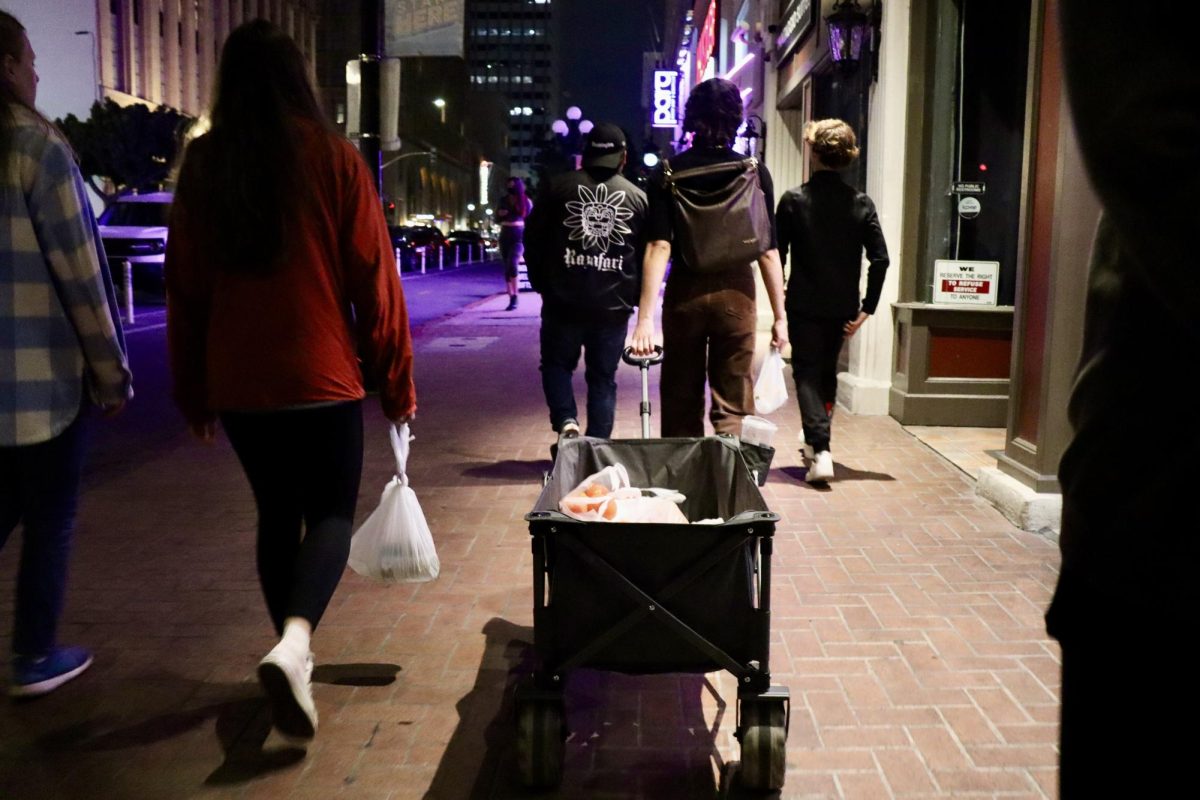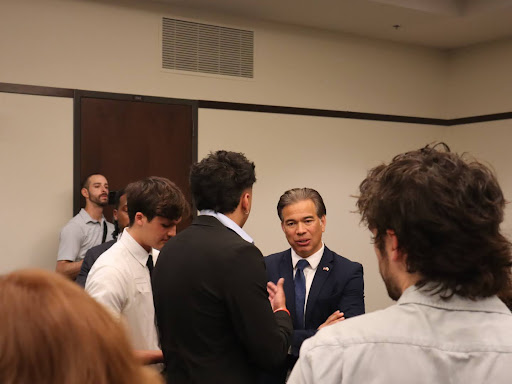Walking the streets of downtown San Diego, one might notice an unusual sight. From the Smart & Final on 720 15th St. to the heart of the Gaslamp Quarter, sidewalks are clear and quiet, with the exception of an occasional passerby. At first glance, this seems like a pleasant surprise; however, for local residents, it raises questions.
The empty streets of downtown San Diego were once home to hundreds of unhoused residents. On July 31, 2023, enforcement of an encampment ban took effect as the local unhoused community was pushed to the fringes of the city center. This was especially true over the summer months as the city prepared for an influx of visitors and tourists.
Almost exactly a year later on July 25, 2024, Gov. Gavin Newsom ordered the removal of homeless encampments. This action has been met with both support and backlash in the ongoing conversation about California’s homelessness crisis. Some have criticized Newsom for exacerbating the problem by sweeping it under the rug and not offering a long-term solution, while others applaud his actions as they aim to connect the unhoused with local service providers.
Volunteers for the nonprofit organization, Streets of Hope, often give out supplies to the unhoused. The group meets every Monday night without fail in front of the Smart & Final on 15th St. to pull carts full of bagged lunches, blankets and other donated supplies.
They provide resources as well as human interaction to the unhoused living downtown. Typically, the volunteers gather to load supplies and then split off to walk two to three blocks, distributing supplies until they run out. After Newsom’s order, volunteers have to walk over two miles before the wagon is empty, whereas before the encampment ban, the wagon would run out within a few blocks.
“When the baseball season starts up, they’re sweeping places where people are seen… The Padres games mean that they get swept away and relocated,” said Dan D’Amato, chairman of the board for Streets of Hope.
The organization also offers free haircuts to unhoused members of the community once a month.
Nancy Restrepo-Wilson is the director of Social Services for Father Joe’s Villages, another organization currently serving the local unhoused community.
“It’s a systematic and systemic issue; we come from a very large history where there are populations made to be in poverty,” Restrepo-Wilson said. “We have historic racism and discriminatory practices. Those systemic issues impact people’s access to resources and opportunities. Poverty is one of the causes that we have encountered as to why people become homeless.”
Alongside poverty, Restrepo-Wilson added that insufficient or unaffordable housing, job loss, evictions and a lack of mental health services all contribute to the vicious cycle of homelessness. She noted that stereotypes often arise from perceptions that all unhoused individuals are homeless due to drug addictions. Restrepo-Wilson countered that, in many cases, homelessness and trauma actually can lead to drug abuse, trapping individuals in a cycle.
However, these issues account for a small percentage of the causes behind the crisis. Economic reasons, lack of affordable housing, general housing availability and rising living expenses are larger contributors to how circumstances can unexpectedly lead to homelessness. Shelter spaces are limited with long wait lists and affordable housing has become increasingly sparse and competitive.
According to the 2024 point-in-time data report by the Regional Task Force of Homelessness, San Diego experienced a 4% increase in the unhoused community between 2023 and 2024, with the majority concentrated in the central region of the city, particularly downtown. This report follows a trend of steady growth over the past few years, as shelters remain at over 90% capacity.
D’Amato highlighted what he called “the invisible homeless,” those who quietly get by living on the streets. In contrast, those who are visible and noticed often shape stereotypes because they may be more vocal due to drug addiction or other issues.
“There’s a lot out there that you don’t see, could be me and you at one point in our lives. There’s homeless kids. It’s truly a diverse community that is wonderful and unique, there is a beauty and a life there,” D’Amato said.
Sean Thom and his cat, Sebastian, were evicted from their apartment on Feb. 29 when a roommate failed to pay rent. As a result, Thom’s credit score plummeted, leaving him unable to secure permanent housing.
“Once you get an eviction, it’s like a semi-truck crashes into your credit and runs it into the ground,” Thom said. “I was just a person living in a house, I didn’t choose this…I didn’t ask for my roommate to stop paying rent, I didn’t ask for my landlord to not help me out, I didn’t ask for any of this. I was paying my rent. I was doing what I was supposed to do.”
Upon eviction, Thom sought help from the 211 relief program but found it to be confusing due to a string of phone numbers, misinformation and redirection of responsibility to other entities.
Thom said that he would be taking up Streets of Hope’s offer for an interview in the coming weeks to potentially help him find housing.
Debra Neer was recently aided by Streets of Hope in getting successfully rehoused. She is in the process of seeking out job opportunities and more permanent housing.
“I’m currently doing a job training program with Dreams for Change, but my hours are almost up. I’m looking into the Kitchens For Good internship program and hoping to hear back sometime this week,” Neer said.
“Not all homeless people choose to be this way. Some people are because they have issues with drugs and alcohol. Not all homeless people are bad troublemakers,” Neer added.
“Homelessness doesn’t define them, it’s just a chapter in their life. We’re trying to get them back on their feet,” Jorge Verdin, the director of communications for Father Joe’s Villages, said.
Leadership from both organizations expressed how universal housing vulnerability can be.
“No one has a desire to be homeless, we pretend that they don’t exist, they don’t suffer, or there’s nothing we can do…but there is a lot. One of them is to literally look at them as human beings and imagine that something has happened to them along the way for them to end up where they are…It’s a collective effort of everyone to find solutions to eliminate poverty and homelessness,” Restrepo-Wilson said.









